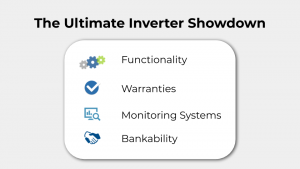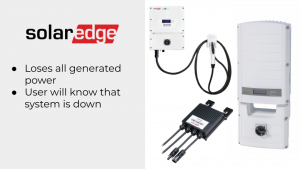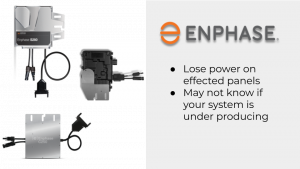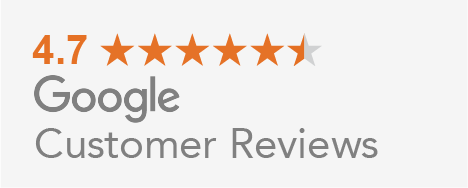Patrick Crowley
Head of Sales & Operations


Rex Kehoe
Director of Installers
SolarEdge Inverters Vs. Enphase Inverters: The Ultimate Inverter Showdown Part 2
July 12, 2019
In this week’s livestream, Patrick and Rex dive deeper into the previous comparison of the SolarEdge and Enphase inverters. In addition to summarizing the four parameters that help us understand the major differences, Patrick and Rex go over some points that were brought up by our viewers.
The four parameters previously discussed comparing the two inverters include the following:
- Functionality
- Warranties
- Monitoring Systems
- Bankability
To learn more about the four parameters, watch the SolarEdge vs. Enphase: The Ultimate Inverter Showdown Part 1 below.
Single-Point-of-Failure vs. Distributed Architecture
The most critical difference between these two technologies can be defined by the single-point-of-failure with SolarEdge inverters and the distributed architecture with Enphase inverters.
SolarEdge: Single-Point-of-Failure
SolarEdge inverters have a single-point-of-failure, the centralized inverter where DC energy converts into functional AC energy. When the DC energy comes down to the central inverter, it converts in one point. What this means for the homeowner is that if the inverter happens to go out, the entire system would inevitably shut down.
Unfortunately, in this case with SolarEdge inverters, all power would be lost. Until the homeowner has an installer come out to evaluate their system to get it back up and functioning, the homeowner will continue to see charges from their grid.
Enphase: Distributed Architecture
Enphase inverters, on the other hand, will experience a distributed architecture under a similar scenario. Because conversion occurs at the roof and underneath the panel, that singular panel would be the only panel affected, and the entire system can still function and will continue to generate power. In addition, homeowners will experience just a percentage of relative loss. (If a homeowner loses 5% of their inverters, they will experience 5% production loss, and 5% loss in their credits.)
Fortunately, with SolarEdge inverters, labor is included in their standard 12-year warranty (which can often get extended to 25 years). Although Enphase does offer a standard 25-year warranty, labor is only included in the first two years. This resulted in out-of-pocket-costs from installers post the two year mark when homeowners needed inverter replacements. As a result, installers have been specifically more selective when installing Enphase inverters. We suspect the cost premium installers charge to install Enphase inverters may potentially be due to covering future labor costs for inverter replacements.
Another added benefit of Enphase inverters is the homeowners ability to pick up a few extra kilowatt hours in the morning and evening they wouldn’t be able to with SolarEdge inverters. This is due to SolarEdge’s centralized inverter which needs a certain amount of power to power up the system. In addition to SolarEdge’s limits with the centralized inverter, it has a capped capacity that may restrain homeowners to add additional panels to their systems compared to the flexibility with Enphase.
In conclusion, it is very important that homeowners do their research and choose the right installers and understand which inverters is right for their home’s needs. Get in touch with our team of Energy Advisors who will educate homeowners on the best options available to them. In any instance where your inverter goes out, our network of top vetted installers will do right by you and make sure they are available for an assessment at your convenience.











